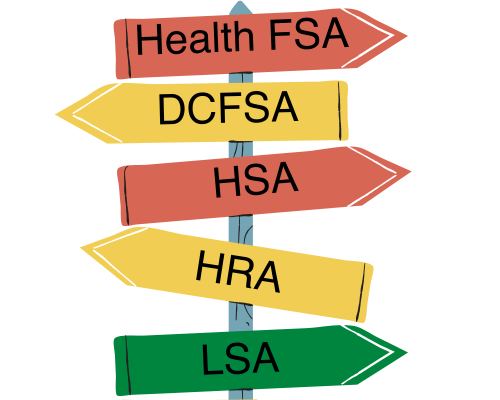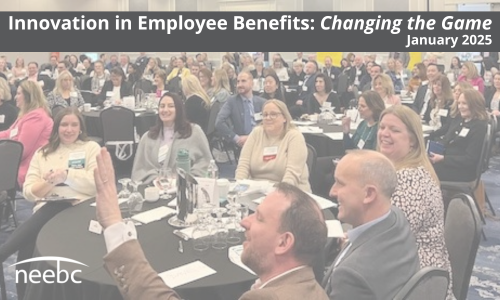 As we honor National Caregiver Month this November, it’s time to recognize that caregiving is no longer a peripheral issue—it’s a central force shaping workforce dynamics, employee well-being, and organizational resilience. For over 35 years, the Boston College Center for Work & Family (BCCWF) has driven progress on critical work-life issues related to caregiving, emphasizing the importance of flexible work, paid leave for parents and caregivers of all types, and promoting men as equal caregivers. From our recent conversations with work-life practitioners and thought leaders, it is clear that employers are looking for ways to better understand the care demographics of their workforces and the invisible loads they carry, and respond with supports that make a difference.
As we honor National Caregiver Month this November, it’s time to recognize that caregiving is no longer a peripheral issue—it’s a central force shaping workforce dynamics, employee well-being, and organizational resilience. For over 35 years, the Boston College Center for Work & Family (BCCWF) has driven progress on critical work-life issues related to caregiving, emphasizing the importance of flexible work, paid leave for parents and caregivers of all types, and promoting men as equal caregivers. From our recent conversations with work-life practitioners and thought leaders, it is clear that employers are looking for ways to better understand the care demographics of their workforces and the invisible loads they carry, and respond with supports that make a difference.
The Caregiving Reality: Universal, Invisible, and Intensifying
“Working while caregiving” is a nearly universal experience. Whether supporting aging parents, children with disabilities, spouses with chronic illness, or navigating end-of-life care, employees are managing complex responsibilities alongside their professional roles. Yet many do not self-identify as caregivers, and only 56% report that their supervisor is aware of their caregiving status (AARP 2015).
 Employee Benefits in 2026 "play a bigger role than ever in shaping the day-to-day employee experience,"1 keeping existing employees engaged and productive, while helping employers attract new talent.
Employee Benefits in 2026 "play a bigger role than ever in shaping the day-to-day employee experience,"1 keeping existing employees engaged and productive, while helping employers attract new talent.

 Even the most seasoned HR or benefits professional can get lost in the alphabet soup that is the world of spending accounts. Between FSAs, HRAs, and HSAs alone there are countless rules and plan options that can escape those who don’t interact with these accounts for a living. Add to that the recent introduction of the LSA (Lifestyle Spending Accounts) and the confusion only grows.
Even the most seasoned HR or benefits professional can get lost in the alphabet soup that is the world of spending accounts. Between FSAs, HRAs, and HSAs alone there are countless rules and plan options that can escape those who don’t interact with these accounts for a living. Add to that the recent introduction of the LSA (Lifestyle Spending Accounts) and the confusion only grows. Pharmacy costs continue to rise year after year. This trend is driven by increasing production and distribution costs from manufacturers, higher utilization of specialty drugs for managing chronic conditions and more patients regularly using the health system compared to a few years ago.1 Unfortunately, no matter the cause, rising drug prices have real consequences: 1 in 3 Americans surveyed said they have difficulty affording their prescription medications.1
Pharmacy costs continue to rise year after year. This trend is driven by increasing production and distribution costs from manufacturers, higher utilization of specialty drugs for managing chronic conditions and more patients regularly using the health system compared to a few years ago.1 Unfortunately, no matter the cause, rising drug prices have real consequences: 1 in 3 Americans surveyed said they have difficulty affording their prescription medications.1 As benefits leaders consider 2026 renewals and plan ahead for their 2027 strategies, new opportunities are emerging in how organizations approach musculoskeletal (MSK) care. While traditional Centers of Excellence (COE) have focused on surgical interventions, a new approach, non-operative COEs, prioritize conservative treatment and early intervention over surgical treatment. This shift represents a strategic response to mounting cost pressures driven by inappropriate utilization of surgery, and recognizes that many MSK conditions can be effectively managed without surgery.
As benefits leaders consider 2026 renewals and plan ahead for their 2027 strategies, new opportunities are emerging in how organizations approach musculoskeletal (MSK) care. While traditional Centers of Excellence (COE) have focused on surgical interventions, a new approach, non-operative COEs, prioritize conservative treatment and early intervention over surgical treatment. This shift represents a strategic response to mounting cost pressures driven by inappropriate utilization of surgery, and recognizes that many MSK conditions can be effectively managed without surgery. Over the past decade, the employer-employee relationship has been tested by relentless external pressures — and it’s buckling under the weight. Pandemic-era upheaval, rapid policy shifts, and technological disruption have driven both employers and employees into survival mode.
Over the past decade, the employer-employee relationship has been tested by relentless external pressures — and it’s buckling under the weight. Pandemic-era upheaval, rapid policy shifts, and technological disruption have driven both employers and employees into survival mode. As we honor National Caregiver Month this November, it’s time to recognize that caregiving is no longer a peripheral issue—it’s a central force shaping workforce dynamics, employee well-being, and organizational resilience. For over 35 years, the Boston College Center for Work & Family (BCCWF) has driven progress on critical work-life issues related to caregiving, emphasizing the importance of flexible work, paid leave for parents and caregivers of all types, and promoting men as equal caregivers. From our recent conversations with work-life practitioners and thought leaders, it is clear that employers are looking for ways to better understand the care demographics of their workforces and the invisible loads they carry, and respond with supports that make a difference.
As we honor National Caregiver Month this November, it’s time to recognize that caregiving is no longer a peripheral issue—it’s a central force shaping workforce dynamics, employee well-being, and organizational resilience. For over 35 years, the Boston College Center for Work & Family (BCCWF) has driven progress on critical work-life issues related to caregiving, emphasizing the importance of flexible work, paid leave for parents and caregivers of all types, and promoting men as equal caregivers. From our recent conversations with work-life practitioners and thought leaders, it is clear that employers are looking for ways to better understand the care demographics of their workforces and the invisible loads they carry, and respond with supports that make a difference. World Mental Health Day is recognized every October to promote mental health education and advocacy worldwide. This year’s theme, “Mental Health in Emergencies and Catastrophes,” could not be timelier. Over the past decade, studies have shown that experiencing a traumatic event is a major risk factor for the onset of mental health challenges and substance-use conditions. Data show just how high this risk factor is today.
World Mental Health Day is recognized every October to promote mental health education and advocacy worldwide. This year’s theme, “Mental Health in Emergencies and Catastrophes,” could not be timelier. Over the past decade, studies have shown that experiencing a traumatic event is a major risk factor for the onset of mental health challenges and substance-use conditions. Data show just how high this risk factor is today. Menopause is a natural transition that affects nearly all women. The more we learn about this life change, the more we understand how much it impacts people’s personal and professional lives. Based on recent research, companies must understand menopause better to improve the health of their employees and the bottom line.
Menopause is a natural transition that affects nearly all women. The more we learn about this life change, the more we understand how much it impacts people’s personal and professional lives. Based on recent research, companies must understand menopause better to improve the health of their employees and the bottom line. Financial wellness has an immense impact on an individual’s health, life, and work. Because of this, employees are looking to their employer for help managing their
Financial wellness has an immense impact on an individual’s health, life, and work. Because of this, employees are looking to their employer for help managing their  Artificial intelligence (AI) is no longer a futuristic concept; it’s a reality. It's becoming a practical tool for HR teams when strategizing compliance and compensation. For professionals navigating pay transparency laws, shifting employee expectations and tight labor markets, AI offers both opportunities and questions.
Artificial intelligence (AI) is no longer a futuristic concept; it’s a reality. It's becoming a practical tool for HR teams when strategizing compliance and compensation. For professionals navigating pay transparency laws, shifting employee expectations and tight labor markets, AI offers both opportunities and questions. Primary care physicians and advanced practice professionals provide a gateway to better health. They enable and direct preventive care, which in turn plays a significant role in helping people avoid chronic diseases, reducing overall health care costs.
Primary care physicians and advanced practice professionals provide a gateway to better health. They enable and direct preventive care, which in turn plays a significant role in helping people avoid chronic diseases, reducing overall health care costs. Employers seeking to mitigate risk and manage rising healthcare costs should be mindful of the need to strengthen their social contract with their workforce. That’s going to make it critical to step up their game with
Employers seeking to mitigate risk and manage rising healthcare costs should be mindful of the need to strengthen their social contract with their workforce. That’s going to make it critical to step up their game with  For those of you who may not know me, I see a lot of concerts. There’s something about the way live music brings people together in a shared experience that’s both exhilarating and deeply human.
For those of you who may not know me, I see a lot of concerts. There’s something about the way live music brings people together in a shared experience that’s both exhilarating and deeply human. In today’s complex world of work, employee wellbeing has become more than a buzzword—it’s a critical pillar of sustainable business performance. Yet, approaches to wellbeing vary significantly across countries, shaped by cultural norms, government policy, and societal expectations. From Scandinavia’s flexible work structures to Japan’s growing mindfulness culture, global perspectives offer valuable lessons for organizations looking to create more inclusive and effective wellbeing strategies (globally or domestically).
In today’s complex world of work, employee wellbeing has become more than a buzzword—it’s a critical pillar of sustainable business performance. Yet, approaches to wellbeing vary significantly across countries, shaped by cultural norms, government policy, and societal expectations. From Scandinavia’s flexible work structures to Japan’s growing mindfulness culture, global perspectives offer valuable lessons for organizations looking to create more inclusive and effective wellbeing strategies (globally or domestically). Take a look around your workplace. Notice anything different?
Take a look around your workplace. Notice anything different? In the world of Leave of Absence (LOA) administration, each employer must decide whether to insource or outsource their LOA case management process. There are pros and cons for both strategies and even when outsourcing, there will be oversight. This article attempts to explore the factors an employer may consider when deciding on their LOA administration strategy.
In the world of Leave of Absence (LOA) administration, each employer must decide whether to insource or outsource their LOA case management process. There are pros and cons for both strategies and even when outsourcing, there will be oversight. This article attempts to explore the factors an employer may consider when deciding on their LOA administration strategy.  Technology is transforming health care with enhanced data insights, personalized solutions, and simpler tools that help members achieve their health ambitions.
Technology is transforming health care with enhanced data insights, personalized solutions, and simpler tools that help members achieve their health ambitions. Pelvic floor pain for women can be caused by many factors. Your employees or their family members shouldn’t have to suffer alone. Learn about the different treatment options and expert recommendations that you can share with your workforce and their loved ones.
Pelvic floor pain for women can be caused by many factors. Your employees or their family members shouldn’t have to suffer alone. Learn about the different treatment options and expert recommendations that you can share with your workforce and their loved ones.  Did you know that women make up
Did you know that women make up  For a third consecutive year, The NEEBC community gathered to connect and learn about ever-developing innovations making a difference for the workforce. NEEBC’s January 23
For a third consecutive year, The NEEBC community gathered to connect and learn about ever-developing innovations making a difference for the workforce. NEEBC’s January 23